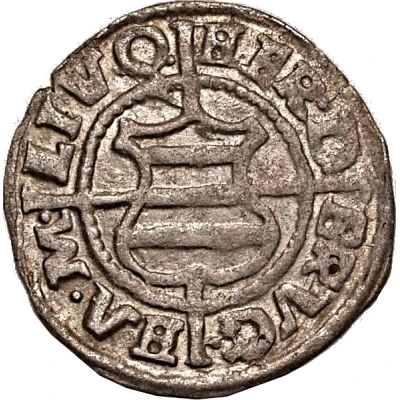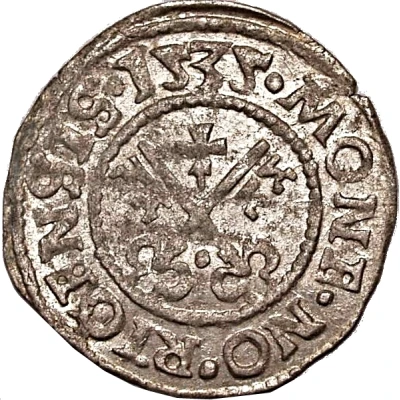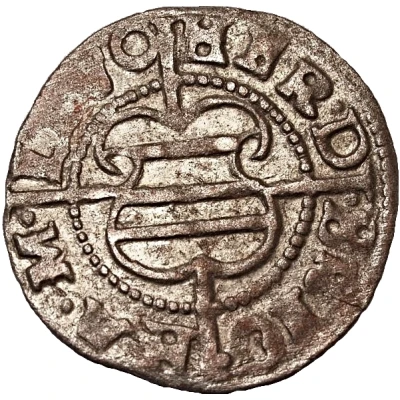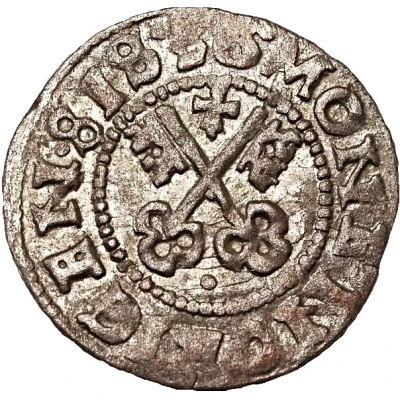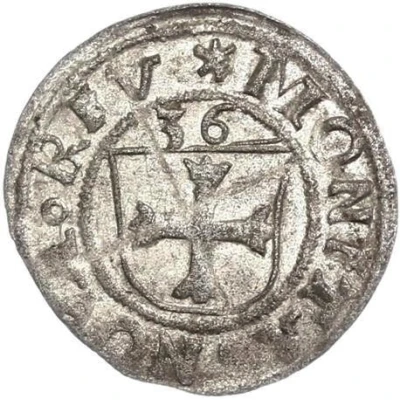
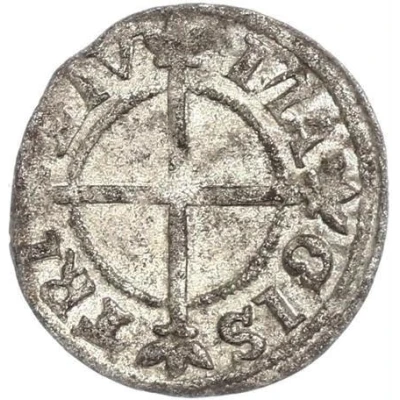

1 Schilling - Hermann von Brüggeneye Reval
| Billon (.1875 silver) | 1.02 g | 18 mm |
| Issuer | Livonian Order (Livonian Confederation) |
|---|---|
| Master | Hermann von Brüggeneye (1535-1549) |
| Type | Standard circulation coin |
| Years | 1535-1536 |
| Value | 1 Schilling |
| Currency | Schilling (1422-1561) |
| Composition | Billon (.1875 silver) |
| Weight | 1.02 g |
| Diameter | 18 mm |
| Thickness | 0.7 mm |
| Shape | Round (irregular) |
| Technique | Hammered |
| Orientation | Variable alignment ↺ |
| Demonetized | Yes |
| Updated | 2024-10-06 |
| Numista | N#68309 |
|---|---|
| Rarity index | 90% |
Reverse
Cross with crowned ends dividing legend into four sections.
Script: Latin
Lettering: MA - GIS - TRI - LIV -
Translation:
Magistri Livoniae
Master of Livonia
Edge
Plain
Comment
The exact lettering of surrounding legend may vary.
No date:
1) MONETA · NOVA · REVA · / MAG - IST - LIV - ONI -
1535 (date divided by shield):
1) MONETA · NOVA · REVAL · / MAG - IST - LIV - ONIE -
2) MONETA · NOVA · REVAL · / MAG - IST - LIV - ONI -
3) MONETA · NOVA · REVAL · / MA - GIS - TRI - LIV -
1536 (date above shield):
1) MONETA · NOVA · REVA · / MAG - IST - LIV - ONI -
2) MONETA · NOVA · REVA · / MAD - GIS - LIV - ON -
3) MONETA · NOVA · REVA · / MA - GIS - TRI - LI -
4) MONETA · NOVA · REV · / MA - GIS - TRI - LIV - (Main photos)
5) MONETA · NOVA · REV · / MA - GIS - TRI - LI -
1536 (date divided by shield):
1) MONETA · NOVA · REVA · / MAG - IST - LIV - ONI -
Interesting fact
One interesting fact about this coin is that it was minted during the Livonian Confederation, which was a unique political entity that existed from 1418 to 1561. It was a confederation of four ecclesiastical states and six secular states in the territory of present-day Estonia and Latvia. The Livonian Order, which minted this coin, was one of the ecclesiastical states and was a military order of German knights who were responsible for the defense of the region. The coin's design and the fact that it was made of billon, a silver-copper alloy, reflect the economic and political influence of the Livonian Order during that time.


